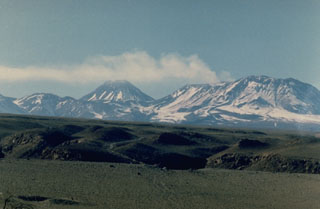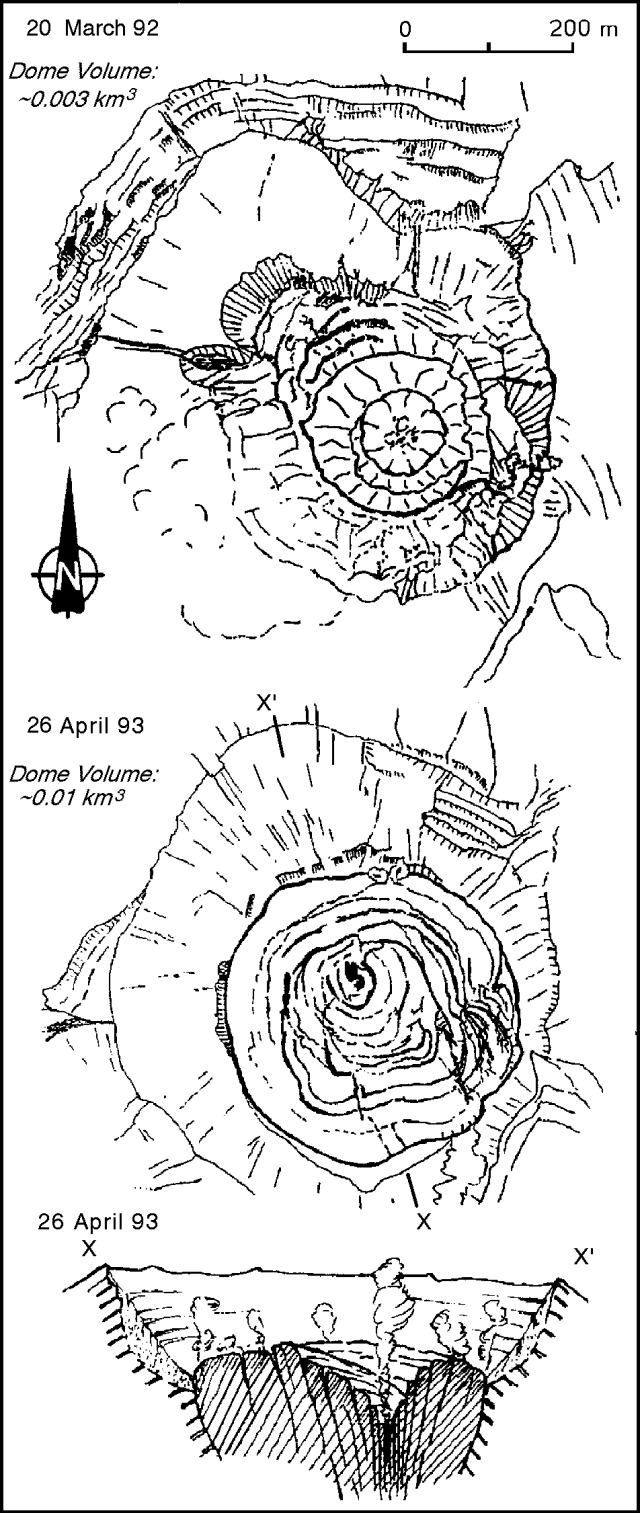Report on Lascar (Chile) — August 1993
Bulletin of the Global Volcanism Network, vol. 18, no. 8 (August 1993)
Managing Editor: Edward Venzke.
Lascar (Chile) Lava dome emplaced following April eruption
Please cite this report as:
Global Volcanism Program, 1993. Report on Lascar (Chile) (Venzke, E., ed.). Bulletin of the Global Volcanism Network, 18:8. Smithsonian Institution. https://doi.org/10.5479/si.GVP.BGVN199308-355100
Lascar
Chile
23.37°S, 67.73°W; summit elev. 5592 m
All times are local (unless otherwise noted)
Additional information indicates that within the active crater the eruption displaced an older dome, and emplaced a new larger dome. The following report by Oscar González-Ferrán is based chiefly on discussions with colleagues and a news correspondent. Sketches were made from stereo sets of aerial photos taken along a vertical axis by the Chilean Air Force on 20 March 1992 and 26 April 1993. The sketches document two domes: the old one on 20 March 1992 before the eruption (figure 19, top), and the new one on 26 April 1993 after the eruption (figure 19, center).
The new dome grew in <40 hours from 24-26 April. On 26 April the dome may have decreased in size during a small explosion that sent ash 2 km above the crater. This event presumably produced the funnel-shaped indentation in the dome shown diagrammatically on figure 19 (bottom). Besides this indentation, the younger dome looks asymmetric, steeper to the N than to the S, and it appears ~3x larger in volume than the older dome. Figure 19 contrasts a radial fracture pattern seen in the old dome (top), and an annular pattern seen in the new dome (center).
Geological Summary. Láscar is the most active volcano of the northern Chilean Andes. The andesitic-to-dacitic stratovolcano contains six overlapping summit craters. Prominent lava flows descend its NW flanks. An older, higher stratovolcano 5 km E, Volcán Aguas Calientes, displays a well-developed summit crater and a probable Holocene lava flow near its summit (de Silva and Francis, 1991). Láscar consists of two major edifices; activity began at the eastern volcano and then shifted to the western cone. The largest eruption took place about 26,500 years ago, and following the eruption of the Tumbres scoria flow about 9000 years ago, activity shifted back to the eastern edifice, where three overlapping craters were formed. Frequent small-to-moderate explosive eruptions have been recorded since the mid-19th century, along with periodic larger eruptions that produced ashfall hundreds of kilometers away. The largest historical eruption took place in 1993, producing pyroclastic flows to 8.5 km NW of the summit and ashfall in Buenos Aires.
Information Contacts: O. González-Ferrán, Univ de Chile; Don Rodrigo de la Peña, Diario El Mercurio, Antofagasta, Chile.


